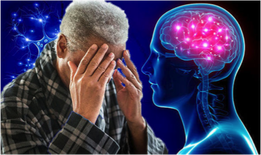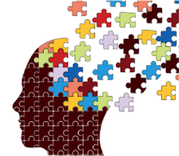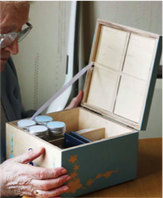|
Managing difficult behaviours in dementia There are more than 78,267 New Zealanders with dementia, and 80 percent of them may develop behavioural symptoms such as aggression, hallucinations, or delusions at some point. Author: Linda Conti, RN, CHPN  As the geriatric population grows, health care practitioners will increasingly encounter distressed caregivers of dementia patients asking for help in handling difficult behaviours. Though most agitation is probably a result of deteriorative changes, health care professionals can influence behaviours. Ensuring needs are met using reassuring language, changing environments, and engaging in soothing activities are among helpful strategies for addressing undesirable behaviours. Agitation is the most common reason families place loved ones with dementia in nursing homes. Some experts suggest that all behaviours are forms of communication. So confounding or ‘bad’ behaviour may actually be an effort to communicate an unmet need when the disease has robbed a patient of words and logic. Resistance-type behaviours may be a response to loss of control, confusion about what is happening, or even feeling rushed in a particular situation. A patient may be depressed, in pain or responding to stress. There is supposition that as the nervous system degenerates, it leaves patients with decreased ability to cope with stress. Caregivers need patience and persistence to sort through patient’s behavioural clues. They should begin by ruling out straightforward physical factors such as pain, injury, constipation, infection, wet briefs, tight or uncomfortable clothes, or a patient feeling too hot or too cold. A patient may provide clues about an underlying problem. In one actual situation, a patient complained bitterly that his foot hurt. In the emergency department, an assessment revealed a severe bladder infection. Following treatment, the patient said his foot no longer hurt. He had provided the biggest clue – that he had pain and it was up to caregivers and healthcare professionals to find the source. Caregivers should review the events of the previous day to evaluate whether a patient may be fatigued from lack of sleep or whether there are changes to a patient’s routine or environment, including the presence of simple holiday decorations for example. Change is the enemy of dementia. Experts in the field of dementia have identified six situations that commonly spar agitation, including fatigue, change, a perception of loss, level of stimulation, excessive demands, and physical stressors such as pain, infections, or constipation. Difficult behaviours Agitation and aggression Agitation, restlessness, and anxiety are common in people with dementia, but even more worrisome is aggression. These behaviours can begin abruptly, or build from a patient’s frustration. They key to managing them lies in examining the source of behaviours to understand the feelings leading to the actions. After checking for physical discomfort, examine what happened immediately before the negative behaviour. What triggered it? Spending the time to figure this out may help prevent future incidents. Use a soft, soothing tone and reassurance in addressing the patient, such as “You seem upset. I’m sorry you’re upset but I’m right here. Let’s get a cookie”. Try a change of environment, something surprising or distracting: dancing, singing a song, going for a walk, or simply going to another room. Involve the patient in an art activity or ask for his or her help with a task. Go for a ride in the car. Play familiar hymns, Christmas carols, or old-time music. Keep in mind that reasoning doesn’t work. Wandering Nearly two thirds of people with dementia will wander at some point. Be prepared. A patient may wander when looking for someone ‘going to work”, relieving boredom, or looking for a place to eat. Identifying the reason for wandering may provide clues about managing it. Suspicion or paranoia This is a phase many people with dementia experience. They may believe someone is trying to steal their money or belongings. This feels very real to dementia patients; explaining and logic won’t work. This is a manifestation of the disease, and not the patient’s thought, it’s not personal. Let the person speak without correcting him or her, be reassuring, reminding him or her who you are and that you are here to help, using phrases such as, “Let me help you look for the money”, and then redirect attention to something else in the room. If money is a recurring issue, put coins and small bills in a purse or wallet for you to “find” in the future. If a person believes people are breaking into the house reassure him or her with statements such as, “That must be scary. I’m right here. I’ll make sure nothing bad happens.” Then refocus attention. Sleep issues Many people with dementia experience difficulty with their circadian rhythms that dictate sleep and wake states. Some tips too help normalise sleep habits include maintaining consistent sleep and daily routines; limiting daytime sleep to 15-20 minute naps; increasing daytime activity, including physical activity such as walking or dancing; avoiding caffeine or serving it only in the morning, offering a light bedtime snack to prevent hunger as a cause of agitation; allowing as much independence as possible in decision making, including a person’s most comfortable sleeping spot; considering melatonin to promote sleep, and keeping a night light on and the room uncluttered. Seek medical advice if these measures don’t work. There may be medical conditions contributing to the night-time confusion and agitation. A physician can also review a patient’s medications, limiting those causing reactions or that are unnecessary. Bathing For some dementia patients, bathing prompts agitation. It may feel strange to a person with dementia to have help with an activity he or she has always performed privately. Preparation can help enormously. Treat pain first. If the patient experiences pain with movement, medicate at least 30 to 60 minutes before the bath. Have at the ready all the supplies you will use. Explain what you are going to do and allay fears. Maintain modesty and ensure the room and water temperature are comfortable. Let the patient do as much as possible for him- or herself. Providing choices restores a sense of control at a time when the person has lost control of so much. Offer choices such as, “Would you like to wash your face or would you like me to help?” Maintaining regular routines, including a regular bath routine, is the key to maintaining serenity. Rushing or startling a person with dementia may provoke agitation. Communication Simple things can greatly enhance communication with a dementia patient. Focus on the communication style. Sit down, if possible, to be at a person’s eye level; standing over someone can feel threatening. If there is a chance the patient has forgotten who you are, introduce yourself. Use a pleasant voice with a smiling facial expression. Speak slowly, calmly, and clearly – not more loudly. Don’t argue or try to reason with the person; logic doesn’t work. Speak in short sentences, pausing after each to allow a person to process what you have said. Give one simple instruction at a time. When a patient with dementia is told “Put your shoes and socks, brush your teeth, comb your hair, and come to the kitchen to eat your breakfast”, none of those things may happen. Use hand gestures when possible, such as patting the chair in which you want the person to sit. Wait patiently for a reply before repeating yourself.  Delirium Delirium is characterised by a sudden change in thinking ability as opposed to the drawn-out disease process of dementia. Delirium is treatable and should be promptly addressed. If non-drug treatments fail, antipsychotics can be effective. Delirium is characterised by a sudden change in thinking ability, inability to focus or sustain attention, changed perception of surroundings, disorganised behaviour, variable or fluctuating status, and a sudden onset within hours or days. Delirium triggers include a new or changed environment, such as hospitalisation; electrolyte imbalance; faecal impaction; urinary retention; drug interactions or side effects; pain; stress; injury; or a serious medical problem such as a stroke, organ failure; or blood clot. As with agitation, delirium can often be prevented or reversed with a calm, familiar environment and routines, activity during the day and quiet surroundings at night, glasses and hearing aids that are working and in place and relaxation, such as music, massage, or reading to the patient. Solutions for dementia induced behaviours Bright light Exposing elderly adults with dementia to bright light boosts their mood. Circadian rhythms are very sensitive to light. Research has shown that nursing home residents exposed to bright light for nine hours per day experienced fewer dementia and depression symptoms. It also improved disturbed thinking, mood, behaviour, functional abilities and sleep. Adding melatonin reduced the time it took to fall asleep and increased the length of sleep in the study. However, when given alone, it made residents more withdrawn during the day. When used with bright light therapy, melatonin reduced aggressive behaviour and didn’t produce resident withdrawal. This research indicates that melatonin should be used only in conjunction with bright light therapy. Rummage bags People with dementia often feel a sense of loss – of objects, memory, and the ability to communicate. This sense of having lost something can cause anxiety or agitation. A rummage bag is a tool to occupy, distract, and satisfy a patient with dementia with an activity related to what they are feeling. It can also relieve boredom. Use a large purse, a men’s toiletry bag, or any other bag, with an assortment of familiar objects that might be interesting to touch, manipulate, or examine. It can easily be filled with common objects in the home. Be sure to avoid items small enough to swallow, sharp objects, or anything that can be disassembled. Be creative. A bag might include items such as keys, address book, wallet, unbreakable mirror, coin purse, small stuffed animal, sample credit cards, photos, TV remote without batteries, comb, old cell phone, sealed flashlight, or a bottle opener.  Distraction kit Create a bag or box of interesting, unexpected, and pleasant activities to introduce when you need to redirect a person’s attention. Eventually the box may have such pleasant associations that the patient quickly redirects his or her attention to it. It could include items such as aromatherapy or perfume; a sound machine with chirping, rain, waves, and other sounds; picture books; a music box; lotion for a hand or foot massage; a flannel basket to warming a dryer and wrap around feet; or special treats. Though none of these techniques will work all the time, patience, persistence, and trial and error can reduce agitation in dementia patients, significantly improving quality of life for both patient and caregiver. Author: Linda Conti, RN, CHPN, Director of marketing for Pathways Home Health and Hospice. Aged Care Issue 2 2021 Comments are closed.
|
AuthorShonagh O'Hagan Archives
July 2024
|

 RSS Feed
RSS Feed